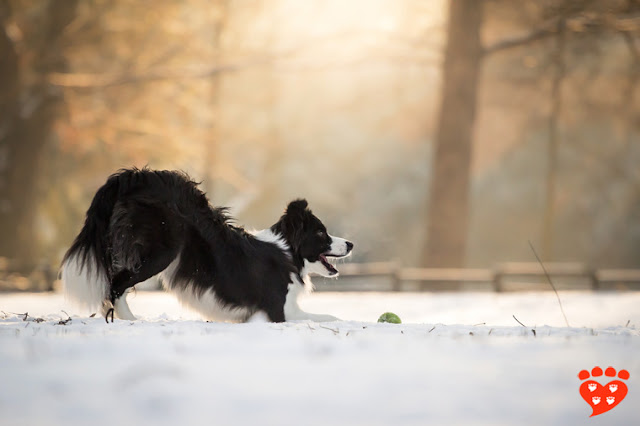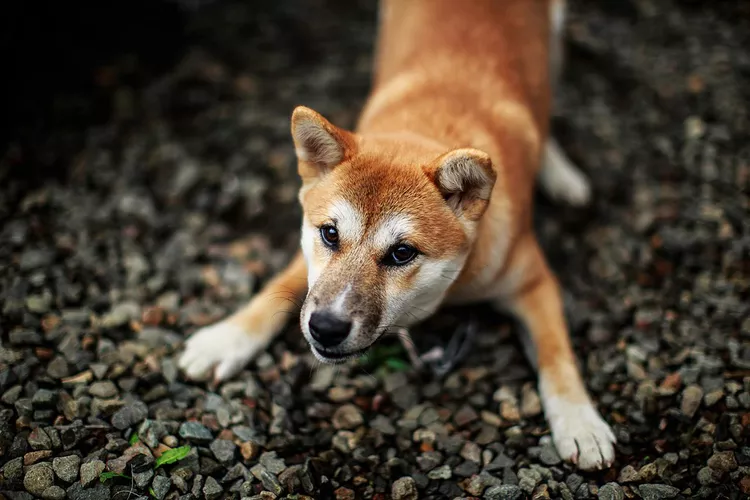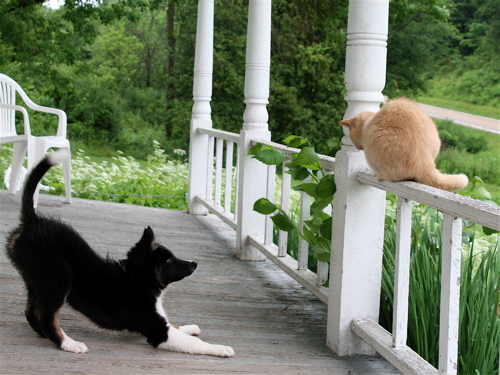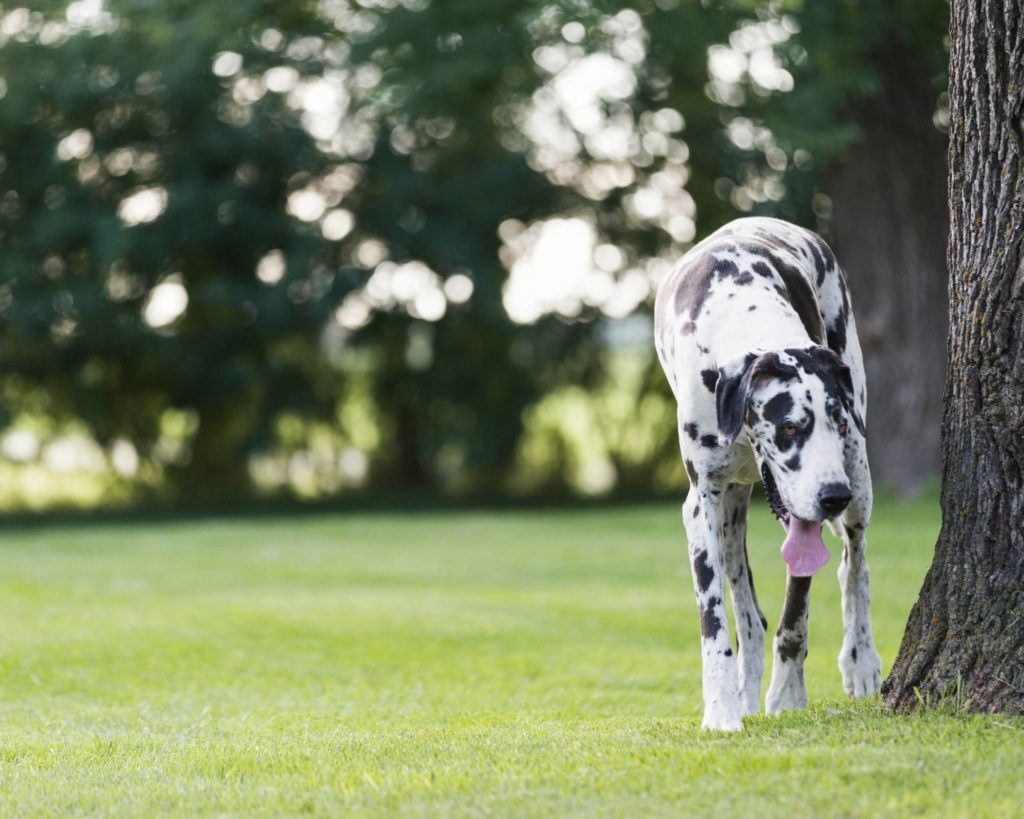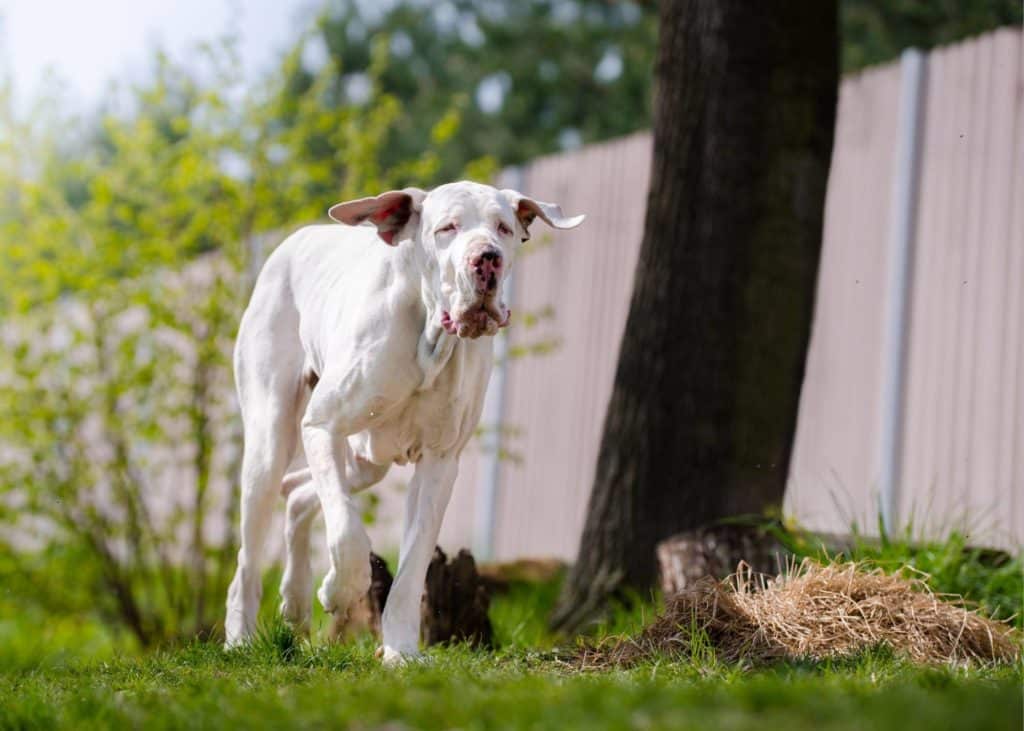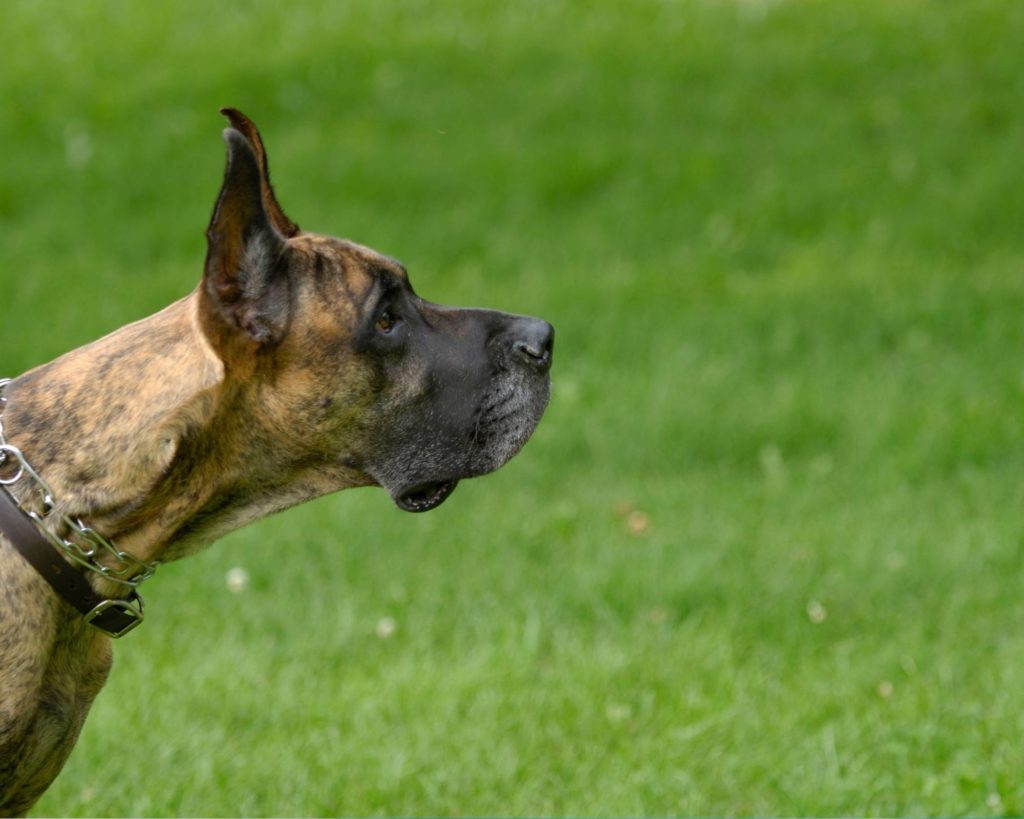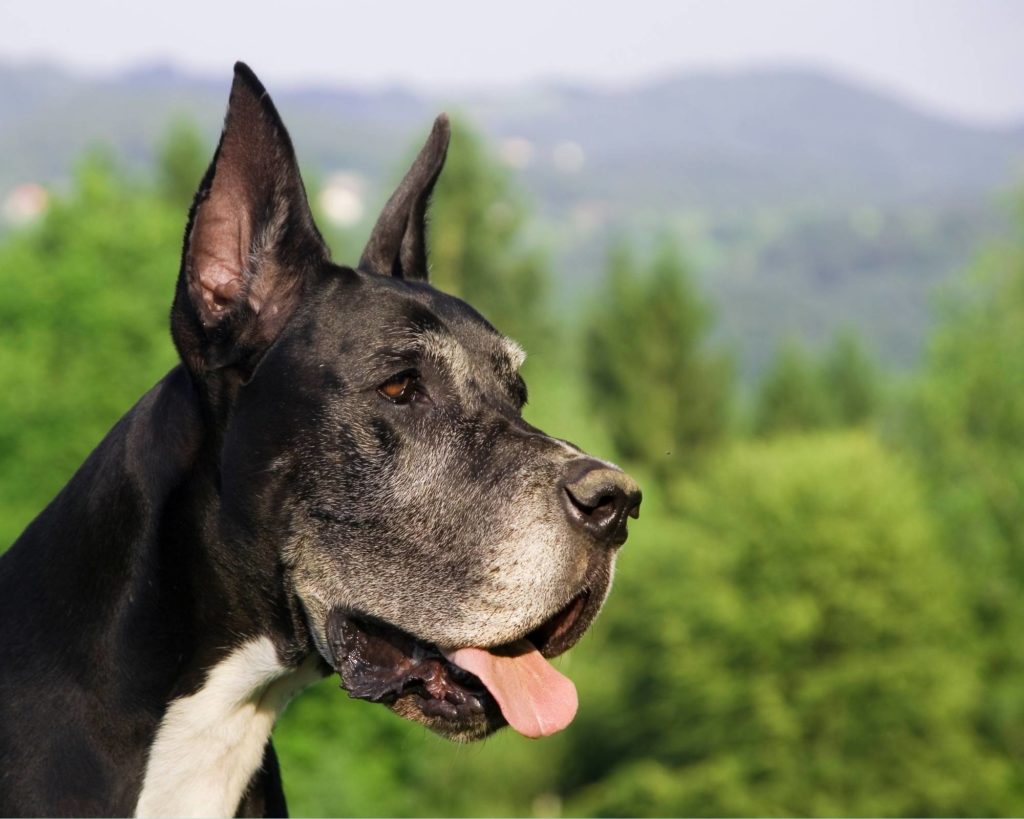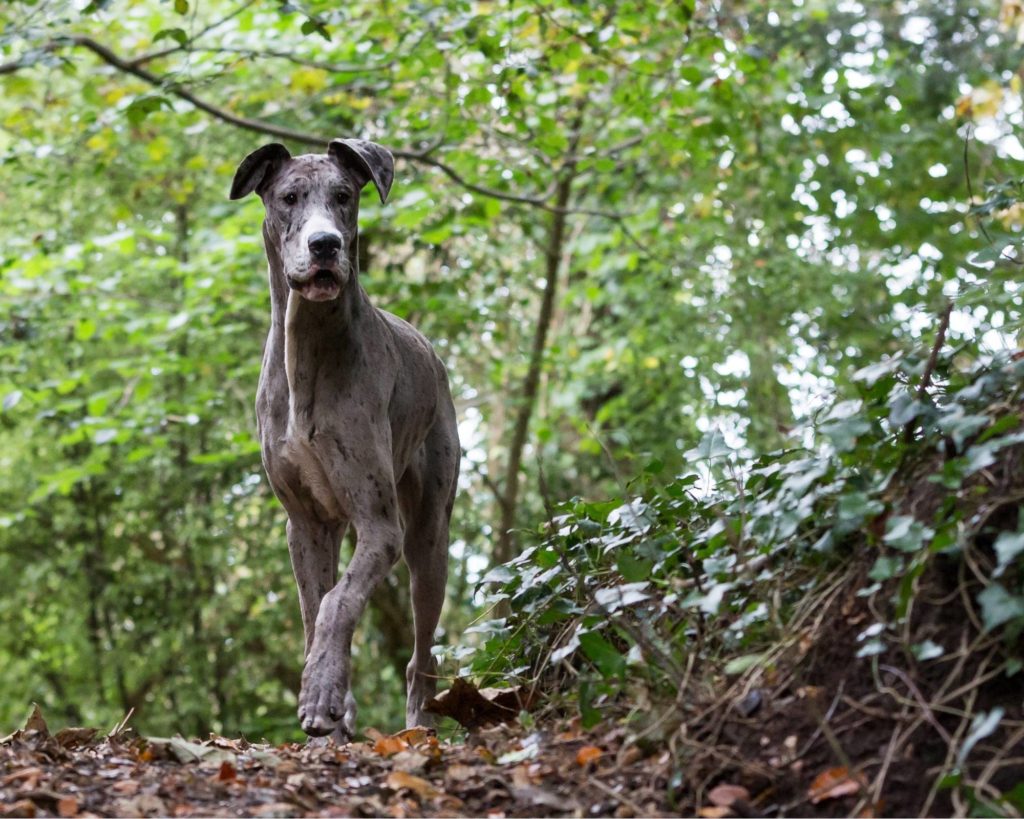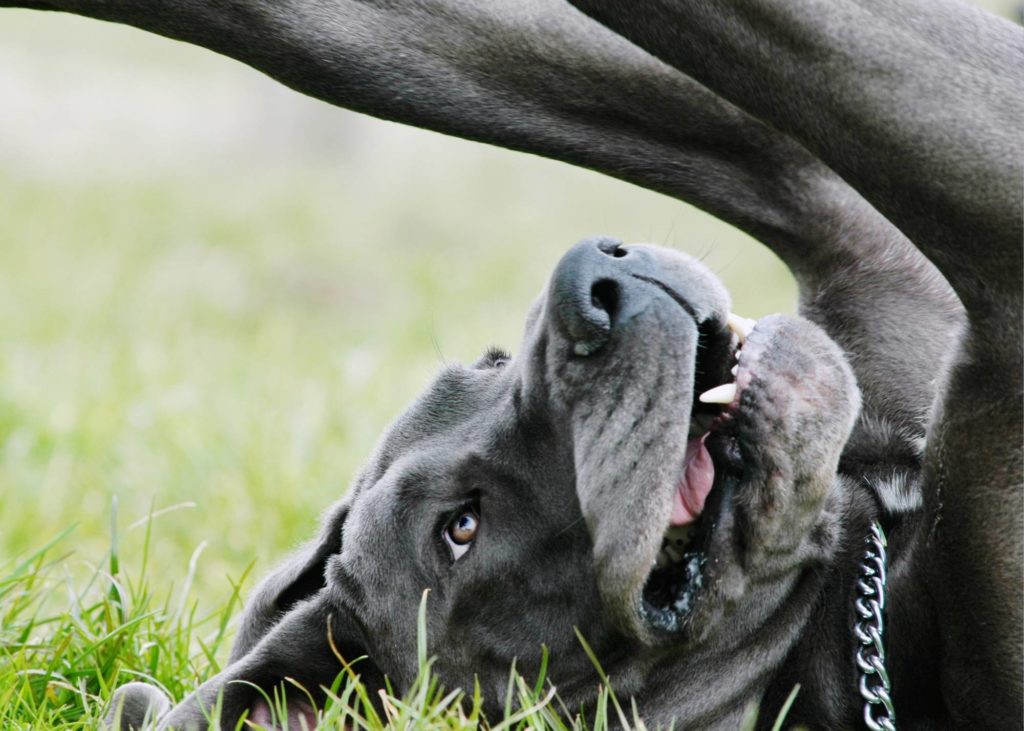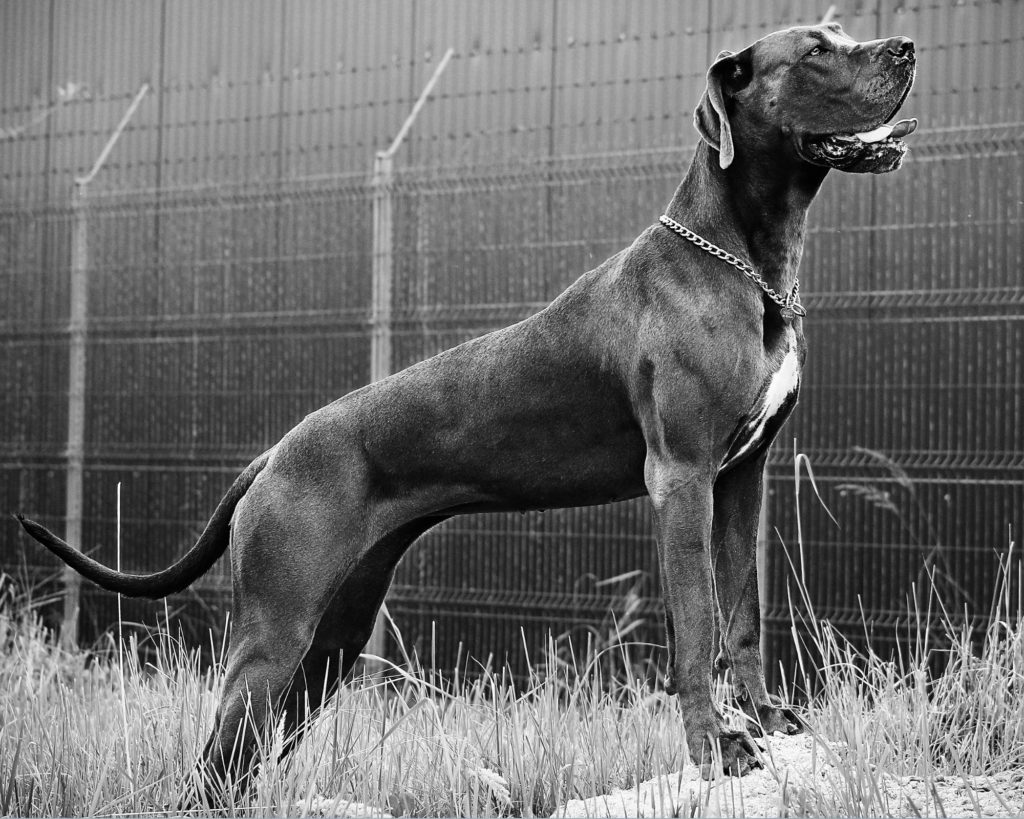In the realm of playful distractions, few tools have captivated both pets and their owners quite like the laser pointer. With a simple flick of the wrist, it projects a tantalizing light beam, igniting a frenzy of pursuit in our furry companions. However, beneath the surface of this seemingly harmless game lies a potential concern known as “Laser Pointer Syndrome.”
While often overlooked, this phenomenon can have significant implications for your dog. I’ll get into the details below, but you must immediately stop if you use a laser pointer to play with your dog.
I’m not trying to scare you, but this is important. In some situations, lasers make fun toys for cats but should never be used for dogs.

What is Laser Pointer Syndrome in Dogs?
Laser Pointer Syndrome in dogs refers to the behavioral and psychological consequences of using laser pointers as a form of play.
When a dog chases the elusive red dot produced by a laser pointer, it triggers their predatory instincts, leading to heightened arousal and frustration.
Unlike traditional toys or objects, the laser dot cannot be caught or consumed, leaving the dog unsatisfied and potentially obsessed with chasing it.
This continuous stimulation without resolution can lead to anxiety, compulsive behaviors, and even frustration-aggression in some cases. Furthermore, the abrupt cessation of play without a tangible reward can leave dogs feeling unfulfilled, contributing to stress and behavioral issues over time.
(For more information, check out this article from the AKC)
What Are the Symptoms of Laser Pointer Syndrome?
The symptoms of Laser Pointer Syndrome in dogs can vary in severity and may manifest differently depending on the individual dog. While playing with a laser may seem harmless, it often is not.
Here are some common signs to watch for:
- Obsessive Behavior: Dogs may become fixated on any light source, constantly scanning their environment for the elusive red dot even when the laser pointer is not in use. They may become obsessed with shadows or will sit and anxiously wait near where the laser is stored.
- Anxiety and Frustration: Continuous exposure to the unattainable target can lead to heightened levels of anxiety and frustration in daily life.
- Compulsive Behavior: Dogs may exhibit repetitive behaviors such as pacing, spinning, or excessive barking due to the frustration caused by the unfulfilled chase.
- Aggression: In some cases, dogs may redirect their frustration into aggressive behavior, either towards the light’s source or other animals or people in the vicinity.
- Withdrawal: Dogs may become disinterested in other forms of play or interaction, preferring the stimulation provided by the laser pointer over other activities.
- Increased Stress: The inability to capture the laser dot or receive a reward can lead to chronic stress and overall dissatisfaction in the dog’s daily life.
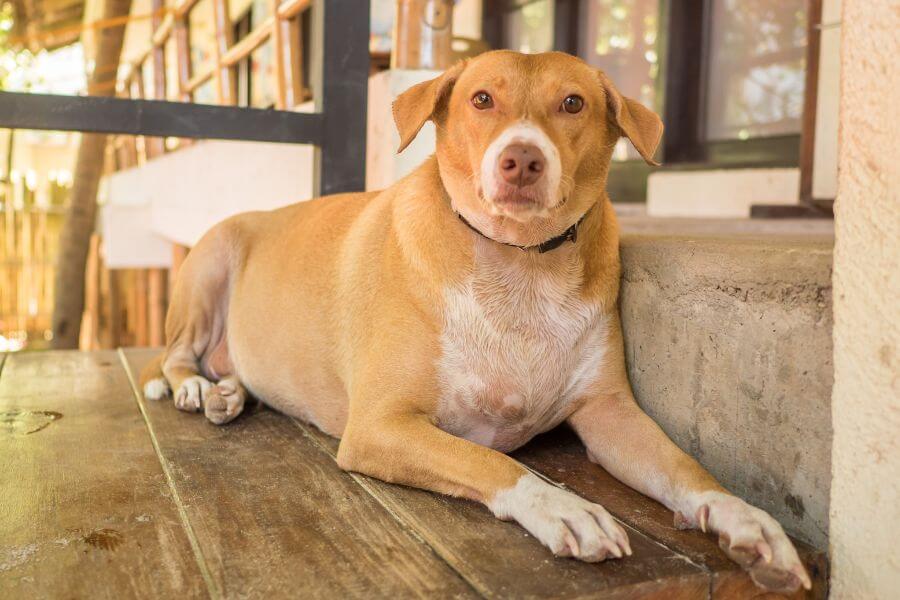
How to Reverse Laser Pointer Syndrome
Reversing Laser Pointer Syndrome in dogs involves implementing behavioral modification techniques and providing alternative forms of enrichment to redirect their focus and fulfill their instincts.
Here are some steps to help reverse Laser Pointer Syndrome:
- Cease Use of Laser Pointer: The first and most crucial step is discontinuing the laser pointer immediately. Continued exposure will only perpetuate the syndrome and exacerbate the associated behavioral issues.
- Provide Physical and Mental Stimulation: Engage your dog in interactive play sessions using toys that allow them to engage their natural hunting and chasing instincts, such as flirt poles, interactive treat-dispensing toys, or puzzle toys. Regular backyard play time, walks, running, or playtime can also provide physical exercise and mental stimulation.
- Training and Positive Reinforcement: Implement training sessions to redirect your dog’s focus and reinforce desired behaviors. Use positive reinforcement techniques, such as treats, praise, and rewards, to encourage alternative behaviors and discourage fixation on lights or shadows.
- Structured Routine: Establish a structured daily routine for feeding, exercise, play, and rest to give your dog a sense of predictability and security. Consistency in their daily activities can help reduce stress and anxiety, which are common contributors to compulsive behaviors.
- Environmental Enrichment: Enrich your dog’s environment with various stimulating activities, such as scent games, hide-and-seek with treats, or interactive toys that dispense food. Rotate toys regularly to keep their interest piqued and prevent boredom.
- Seek Professional Help: If your dog’s symptoms persist or worsen despite your efforts, consider seeking guidance from a certified animal behaviorist or veterinarian. They can assess your dog’s specific needs and develop a tailored behavior modification plan to address Laser Pointer Syndrome effectively.
Dog Safe Flirt Pole
Replace your laser pointer with a flirt pole. These are fun for your dog, make a great training tool, and tap into the same fun you’ve both come to know and love.
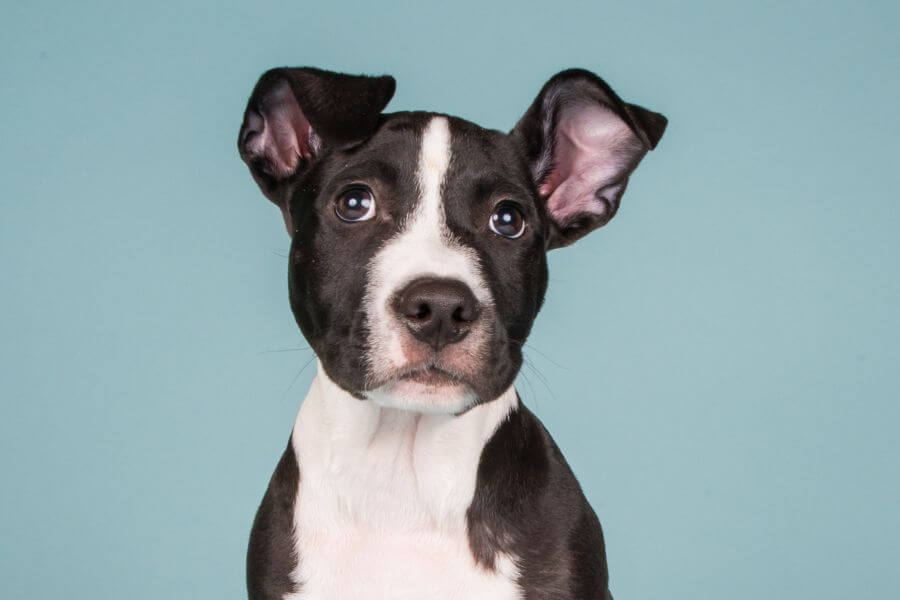
What Happens If I Play With My Dog With a Laser Anyway?
When confronted with this information, many people will defend their choice to use a laser with their pet anyway.
After all, it’s fun to watch them chase and prey on the little red dot.
To each their own, I suppose, but I firmly believe you’re playing with fire. There are safer and more fun ways to tire a dog than a laser toy that won’t result in psychological damage.
We owe our pets at least that much.

